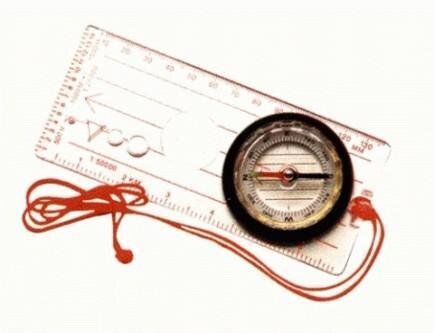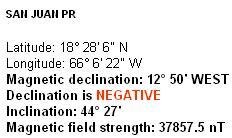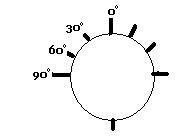Eduardito,
I looked up the installation details and came up with the following results (of which all match your own data).
San Juan, Puerto Rico
LAT 18° 27' 58" N
LONG 66° 06' 21" W
Satellite 30.0°W Hispasat
TP 11.884 V SR 27500
True Azimuth 113.5°
Mag Azimuth (add 12° 49') 126.3°
Dish Elevation 43.76°
LNB type NORMAL (standard linear)
L.O. Freq 10750
LNB polarization -60.5°
EIRP 47 dBw
Recommended dish size 75 cm / 29.5"
Here are some other TPs you can test for:
11972 H SR 27500 FEC 5/6
12052 V SR 27500 FEC 3/4
12132 H SR 27500 FEC 3/4
12158 V SR 2348 FEC 3/4
12172 H SR 27500 FEC 3/4
Everything regarding setup data is accurate and your dish size is well above minimum required.
I see that you are reading signal strength, which appears to be at least 80% (I can only see the '8' in the pix). That is a good indication that your LNB is operational and your cabling is good.
When you set the LNB polarity, did you go CW or CCW to 60.5°? I believe this should be CW when standing in front of the dish.
When the satellite is to your east, the top of the LNB should be rotated to the east.
So either the signal LOS is blocked or you just haven't hit the "sweet spot" with the alignment yet.
As for LOS, the best time to check this is during the spring and fall (March and October I think). But you can still get a rough idea other times of the year. Google for a SUN OUTAGE CALCULATOR. This may help you identify if the tree is in your LOS. For a few day window in the spring and fall, the sun's track will be in line with the satellite arc and so you can visually see exactly where each satellite is in the sky by checking the sun's position at a specific time of day.
The track of the sun at this time of year will be below the actual satellite arc, so that should help. Watch the sun in the morning as it rises, if it passes just near the top or completely over the top of the tree, then the satellite must definitely be above the top of the tree and there will be no LOS trouble for you. If, however, the sun passes under the canopy of the tree, I would be concerned and try to check it more extensively. I am betting that there is not a problem with the tree for your LOS.
If your LOS is confirmed to be clear, then it must be just a matter of finding the "sweet spot" in your alignment. Start with your initial setting for dish elevation (43.8°) and pan the dish azimuth east and west slowly. If no signal pops in, readjust your dish elevation by about one degree (either up or down) and repeat the panning. Continue this until you cover the sky E-W in azimuth and using dish elevation from ~38° to ~49°. Be very patient and make very small adjustments, pause and wait a few seconds before moving the azimuth again. This allows time for the receiver to lock onto any signal.
EDIT: I should clarify my statement regarding "covering the sky" in the azimuth angle. I hope it was obvious to everyone that it is NOT neccessary to cover the entire horizon from east to west. You have a good idea of where the satellite is, within reason. There is no sense in panning the dish beyond that specific "window" in the sky for any specific satellite. If you have a good reading from your compass for the Magnetic azimuth position of the sat, there is no reason to go much beyond +/- 10 degrees from there. The sat has to be within that window, somewhere.
RADAR
























